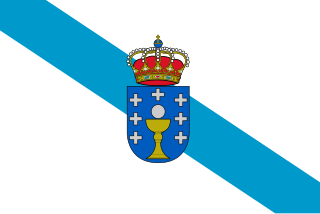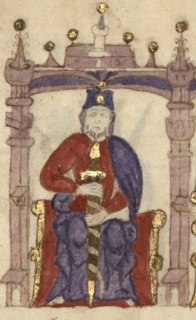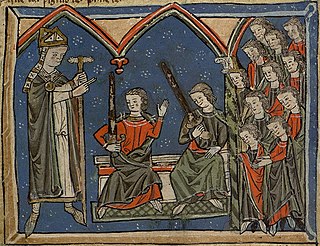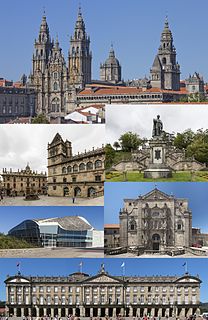
Alfonso VI, nicknamed the Brave or the Valiant, was the son of King Ferdinand I of León and Queen Sancha, daughter of Alfonso V and sister of Bermudo III. He became king of León (1065–72) and of Galicia, and then king of the reunited Castile and León.
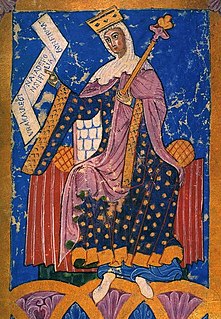
Urraca called the Reckless, was Queen of León, Castile, and Galicia from 1109 until her death in childbirth. She claimed the imperial title as suo jure Empress of All the Spains and Empress of All Galicia.
This is a historical timeline of Portugal.

Raymond of Burgundy was the ruler of Galicia from about 1090 until his death. He was the fourth son of Count William I of Burgundy and Stephanie. He married Urraca, future queen of León, and was the father of the future emperor Alfonso VII.
Sancho Alfónsez was the only son of King Alfonso VI of Castile and León; his mother was the Moorish princess Zaida. Alfonso's heir from May 1107, he eventually co-ruled from Toledo. He predeceased his father, being killed while trying to escape the field of the Battle of Uclés. His death, on his first recorded military expedition, precipitated a succession crisis that ended with the accession of his elder half-sister Urraca and her husband, Alfonso the Battler, already King of Navarre and Aragon, to the throne of Kingdom of Castile-León.

Arias Pérez or Peres was a Galician knight and military leader in the Kingdom of León. According to modern scholar Richard Fletcher, he was "active, resourceful, spirited and persuasive", and the contemporary Historia compostellana says that he was "so eloquent that he could turn black into white and white into black", although he "was not of the great nobility".

Gómez González, called de Lara or de Candespina, was a Castilian nobleman and military leader who had some claim to being Count of Castile. He was the eldest son and successor of Gonzalo Salvadórez and his wife Sancha, and thus kinsman of the Lara family. Like his father, he perished in battle.

Gómez Núñez was a Galician and Portuguese political and military leader in the Kingdom of León. His power lay in the valley of the Minho, mainly on the north side, bounded by the Atlantic on the west and corresponding approximately with the Diocese of Tui. There, according to a contemporary source, he had "a strong site, a fence of castles and a multitude of knights and infantry."

Pedro Fróilaz de Traba was the most powerful secular magnate in the Kingdom of Galicia during the first quarter of the twelfth century. According to the Historia compostelana, he was "spirited ... warlike ... of great power ... a man who feared God and hated iniquity," for Diego Gelmírez himself had "fed him, like a spiritual son, with the nutriment of holy teaching." Brought up at the court of the Emperor Alfonso VI, Pedro raised the future Emperor Alfonso VII in his household. Around the latter he and Diego formed a "Galician party" that dominated that region during the turbulent reign of Urraca (1109–26). In September 1111 they even had the child Alfonso crowned king at Santiago de Compostela, but it was Pedro who was imperator in orbe Galletiae.

Rodrigo Vélaz was the "count of Galicia, who held Sarria" according to the near-contemporary Chronica Adefonsi imperatoris. During his long public career he was the dominant figure in mountainous eastern Galicia while the House of Traba dominated its western seaboard. He served under three monarchs—Alfonso VI, Urraca, and Alfonso VII—and was loyal to all of them, never figuring in any rebellion. The contemporary Historia compostellana is a valuable source for his life, since there are no aristocratic archives surviving in Spain from this period. Rodrigo's career must be pieced together from the few references in the chronicles and the charters preserved in various ecclesiastical archives.
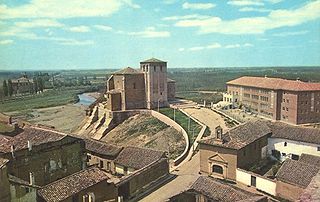
Beltránde Risnel, also called Bertrand de Laon, was a French-born Aragonese political and military leader during the reign of Alfonso the Battler, who was his cousin. Beltrán was mainly active in the kingdoms of León and Castile, which Alfonso co-ruled for a time with his wife, Queen Urraca. He received Leonese titles and governed territories in León and Castile on behalf of the crown. He only sporadically attended the court of either King Alfonso or Queen Urraca, but he sometimes acted as a go-between. He became progressively more involved to Leonese court politics, eventually serving Alfonso VII as a count and having a marriage arranged to the king's half-sister. In 1130, he joined his father-in-law in revolt and ended up much reduced in status. He eventually rejoined Alfonso the Battler and died in battle alongside him.

Suero Vermúdez was an Asturian nobleman, extensive landowner, patron of churches, territorial governor, and military leader. He was an important man in León and Castile during the reigns of three monarchs—Alfonso VI, Urraca, and Alfonso VII—all of whom he served with notable loyalty, never taking part in any revolt, but aiding his sovereigns in wars against rebels, against rivals, and against the Moors. The primary sources for the life of Suero are the contemporary narratives the Historia compostellana and the Chronica Adefonsi imperatoris and some 150 surviving charters which make mention of, were drawn up by, or confirmed by Suero. Suero held extensive interests in ecclesiastical properties. Out of his enormous wealth he was a generous patron of monasteries, and appears to have favoured the Benedictines and the Cluniac reform. The Chronica describes Suero, one of the few noblemen it praises, as "a man strong in counsel and a seeker of truth" and "a lover of peace and truth and a faithful friend of the king".
Fernando García de Hita was a Castilian nobleman, traditionally considered the founder of the noble House of Castro. He governed the lordships of Hita and Guadalajara, and frequently attended the royal court under King Alfonso VI and Queen Urraca.
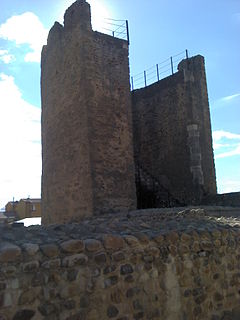
GutierreFernández was a Leonese nobleman who served as the majordomo (1110–17) of Queen Urraca until he was removed after imprisoning the queen's lover.
Peter I was the bishop of León from about 1087 until his deposition around 1111.
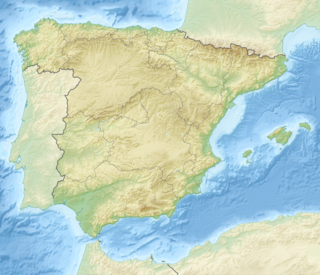
The Banu Gómez were a powerful but fractious noble family living on the Castilian marches of the Kingdom of León from the 10th to the 12th centuries. They rose to prominence in the 10th century as counts in Saldaña, Carrión and Liébana, and reached their apogee when, allied with Córdoba warlord, Almanzor, their head, García Gómez, expelled king Vermudo II of León and briefly ruled there. He would reconcile with the royal family, but launched two subsequent rebellions. On his death, the senior line of the family was eclipsed, but a younger branch would return to prominence, producing Pedro Ansúrez, one of the premier noblemen under king Alfonso VI and queen Urraca in the late 11th and early 12th centuries. The family would be portrayed in the Cantar de Mio Cid as rivals and antagonists of the hero, El Cid, and their rebellions would serve as a basis for the legend of Bernardo del Carpio.
